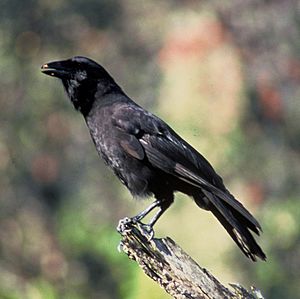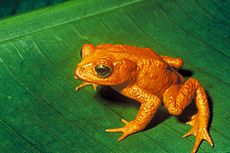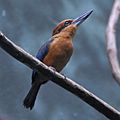Extinct in the Wild facts for kids

Extinct in the Wild (EW) is a special conservation status for a species. It means that a group of plants or animals no longer lives in its natural habitat. The only known living members are being kept in captivity. This could be in a zoo, a special breeding center, or a botanical garden. These species need human care to survive.
Quick facts for kids Conservation status
|
|
|---|---|
 |
|
| Extinct | |
|
|
| Threatened | |
|
|
| Lower Risk | |
|
|
|
Other categories |
|
|
|
|
Related topics
|
|
 Comparison of Red list classes above and NatureServe status below  |
|
Animals Extinct in the Wild
Many different animals and plants have been classified as Extinct in the Wild. This means they can only be found in zoos or special reserves. Here are some examples of species that are no longer found living freely in nature:
- Abingdon Island Tortoise
- Red-tailed Black Shark
- Père David's Deer
- Barbary Lion (extinct in the wild since 1922)
- Wyoming Toad (extinct in the wild since 1991)
- Hawaiian Crow (extinct in the wild since 2002)
- Alagoas Curassow (extinct in the wild since 1987 or 1988)
- Socorro Dove (extinct in the wild since 1972)
- Guam Rail (extinct in the wild since 1980)
- Black Soft-shell Turtle
- Butterfly Goodeid
- Partula (a type of snail)
- Scimitar Oryx
- Spix's Macaw
Bringing Species Back: Reintroduction
Reintroduction is when scientists try to release a species back into its natural home. These animals or plants come from captivity. Sometimes, they are moved from other areas where the species still lives. This effort usually focuses on species that are endangered or already Extinct in the Wild.
It is very difficult to reintroduce EW species into the wild. Even if their natural habitats are made safe again, there are challenges. One big reason is that the survival skills needed to live in the wild can be lost. These skills are usually passed down from parents to offspring. For example, knowing how to find food or avoid predators might be forgotten. So, while the genetics of the species are saved, their natural behaviors might be gone.
Images for kids
-
The Guam kingfisher has been extinct in the wild since 1986.
-
The scimitar oryx (Oryx dammah) is an example of a species which is extinct in the wild.
See also
 In Spanish: Especie extinta en estado silvestre para niños
In Spanish: Especie extinta en estado silvestre para niños




